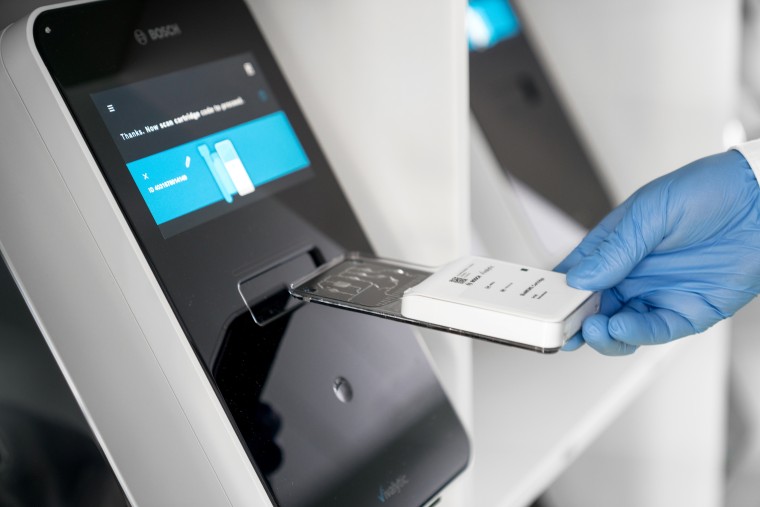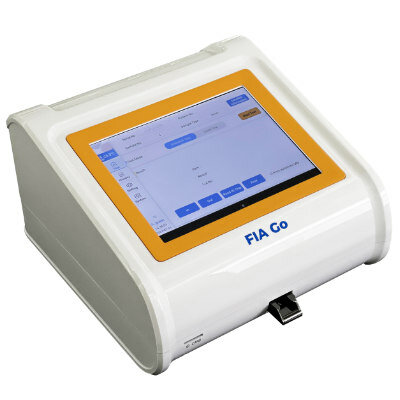Elevated Glycolated Hemoglobin in Young People Predicts Likelihood of Diabetes or Cardiovascular Disease in Adulthood
|
By LabMedica International staff writers Posted on 19 Aug 2020 |
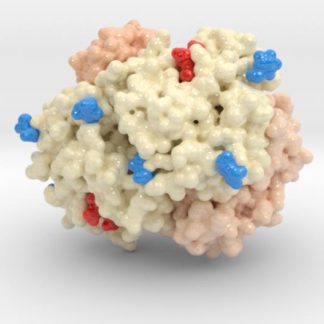
Model of the HbA1c molecule (image courtesy of Biologic Models)
A review of blood test results from more than 14,000 young people suggested that measurement of glycated hemoglobin (HbA1c) was a specific and useful nonfasting marker for identify high-risk youth who could benefit from lifestyle interventions to prevent diabetes and cardiovascular risk in adulthood.
The American Diabetes Association (ADA) has estimated that more than 34 million or roughly 10% of Americans have diabetes, and many of these cases are undiagnosed. Furthermore, obesity-associated type II diabetes is rapidly becoming more prevalent in children, due to the rise in obesity, poor diet, and sedentary lifestyles.
In this light, investigators at Johns Hopkins University (Baltimore, MD, USA) evaluated the performance of current clinical definitions of prediabetes and diabetes based on glycolated hemoglobin (HbA1c), fasting plasma glucose (FPG), either HbA1c or FPG, or both HbA1c and FPG (confirmatory definition) to identify youth at high cardiometabolic risk. For this study, the investigators reveiwed blood test data on 14,119 young people aged 10 to 19 from the U.S. National Health and Nutrition Examination Surveys ( NHANES) conducted between 1999 and 2016.
Results revealed that associations with cardiometabolic risk were consistently stronger and more specific for HbA1c-defined hyperglycemia (specificity = 98.6%; sensitivity = 4.0%) than FPG-defined hyperglycemia (specificity = 90.1%; sensitivity = 19.4%). Furthermore, 51% of subjects with HbA1c-defined hyperglycemia were obese compared to just 29% with hyperglycemia defined by the fasting glucose test.
"Our study demonstrates that HbA1c is a useful non-fasting test for identifying high-risk youth who could benefit from lifestyle interventions to prevent diabetes and cardiovascular disease later in life," said senior author Dr. Elizabeth Selvin, professor of epidemiology, at Johns Hopkins University. "Some pediatricians have already been using HbA1c, but there has not been sufficient guidance from pediatric organizations. I am hoping that these results will help inform and guide the use of this important screening tool in clinical practice."
The study was published in the August 10, 2020, online edition of the journal Pediatrics.
Related Links:
Johns Hopkins University
The American Diabetes Association (ADA) has estimated that more than 34 million or roughly 10% of Americans have diabetes, and many of these cases are undiagnosed. Furthermore, obesity-associated type II diabetes is rapidly becoming more prevalent in children, due to the rise in obesity, poor diet, and sedentary lifestyles.
In this light, investigators at Johns Hopkins University (Baltimore, MD, USA) evaluated the performance of current clinical definitions of prediabetes and diabetes based on glycolated hemoglobin (HbA1c), fasting plasma glucose (FPG), either HbA1c or FPG, or both HbA1c and FPG (confirmatory definition) to identify youth at high cardiometabolic risk. For this study, the investigators reveiwed blood test data on 14,119 young people aged 10 to 19 from the U.S. National Health and Nutrition Examination Surveys ( NHANES) conducted between 1999 and 2016.
Results revealed that associations with cardiometabolic risk were consistently stronger and more specific for HbA1c-defined hyperglycemia (specificity = 98.6%; sensitivity = 4.0%) than FPG-defined hyperglycemia (specificity = 90.1%; sensitivity = 19.4%). Furthermore, 51% of subjects with HbA1c-defined hyperglycemia were obese compared to just 29% with hyperglycemia defined by the fasting glucose test.
"Our study demonstrates that HbA1c is a useful non-fasting test for identifying high-risk youth who could benefit from lifestyle interventions to prevent diabetes and cardiovascular disease later in life," said senior author Dr. Elizabeth Selvin, professor of epidemiology, at Johns Hopkins University. "Some pediatricians have already been using HbA1c, but there has not been sufficient guidance from pediatric organizations. I am hoping that these results will help inform and guide the use of this important screening tool in clinical practice."
The study was published in the August 10, 2020, online edition of the journal Pediatrics.
Related Links:
Johns Hopkins University
Latest Hematology News
- Next Generation Instrument Screens for Hemoglobin Disorders in Newborns
- First 4-in-1 Nucleic Acid Test for Arbovirus Screening to Reduce Risk of Transfusion-Transmitted Infections
- POC Finger-Prick Blood Test Determines Risk of Neutropenic Sepsis in Patients Undergoing Chemotherapy
- First Affordable and Rapid Test for Beta Thalassemia Demonstrates 99% Diagnostic Accuracy
- Handheld White Blood Cell Tracker to Enable Rapid Testing For Infections
- Smart Palm-size Optofluidic Hematology Analyzer Enables POCT of Patients’ Blood Cells
- Automated Hematology Platform Offers High Throughput Analytical Performance
- New Tool Analyzes Blood Platelets Faster, Easily and Accurately
- First Rapid-Result Hematology Analyzer Reports Measures of Infection and Severity at POC
- Bleeding Risk Diagnostic Test to Reduce Preventable Complications in Hospitals
- True POC Hematology Analyzer with Direct Capillary Sampling Enhances Ease-of-Use and Testing Throughput
- Point of Care CBC Analyzer with Direct Capillary Sampling Enhances Ease-of-Use and Testing Throughput
- Blood Test Could Predict Outcomes in Emergency Department and Hospital Admissions
- Novel Technology Diagnoses Immunothrombosis Using Breath Gas Analysis
- Advanced Hematology System Allows Labs to Process Up To 119 Complete Blood Count Results per Hour
- Unique AI-Based Approach Automates Clinical Analysis of Blood Data
Channels
Clinical Chemistry
view channel
3D Printed Point-Of-Care Mass Spectrometer Outperforms State-Of-The-Art Models
Mass spectrometry is a precise technique for identifying the chemical components of a sample and has significant potential for monitoring chronic illness health states, such as measuring hormone levels... Read more.jpg)
POC Biomedical Test Spins Water Droplet Using Sound Waves for Cancer Detection
Exosomes, tiny cellular bioparticles carrying a specific set of proteins, lipids, and genetic materials, play a crucial role in cell communication and hold promise for non-invasive diagnostics.... Read more
Highly Reliable Cell-Based Assay Enables Accurate Diagnosis of Endocrine Diseases
The conventional methods for measuring free cortisol, the body's stress hormone, from blood or saliva are quite demanding and require sample processing. The most common method, therefore, involves collecting... Read moreHematology
view channel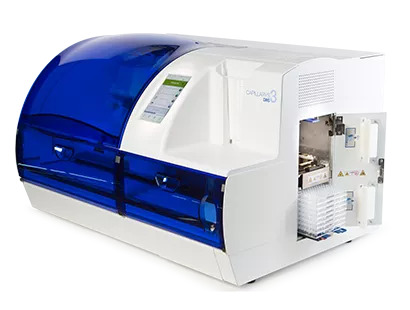
Next Generation Instrument Screens for Hemoglobin Disorders in Newborns
Hemoglobinopathies, the most widespread inherited conditions globally, affect about 7% of the population as carriers, with 2.7% of newborns being born with these conditions. The spectrum of clinical manifestations... Read more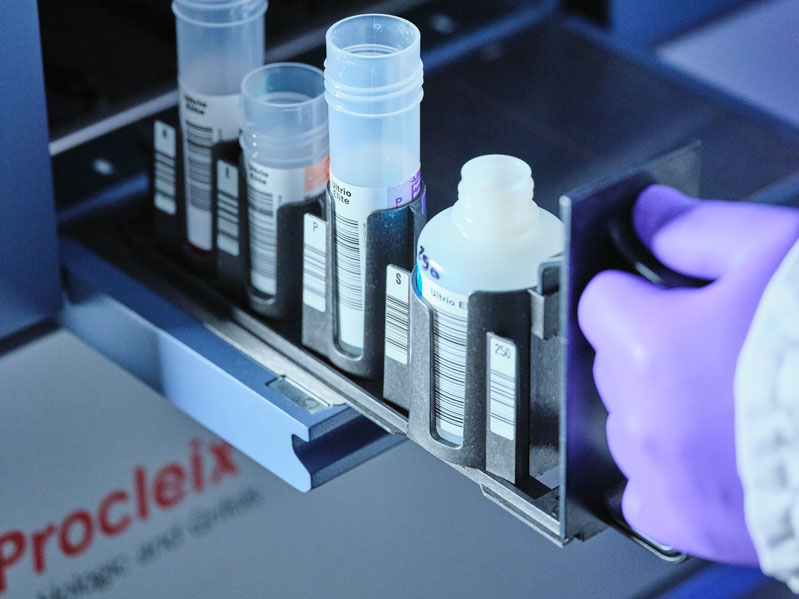
First 4-in-1 Nucleic Acid Test for Arbovirus Screening to Reduce Risk of Transfusion-Transmitted Infections
Arboviruses represent an emerging global health threat, exacerbated by climate change and increased international travel that is facilitating their spread across new regions. Chikungunya, dengue, West... Read more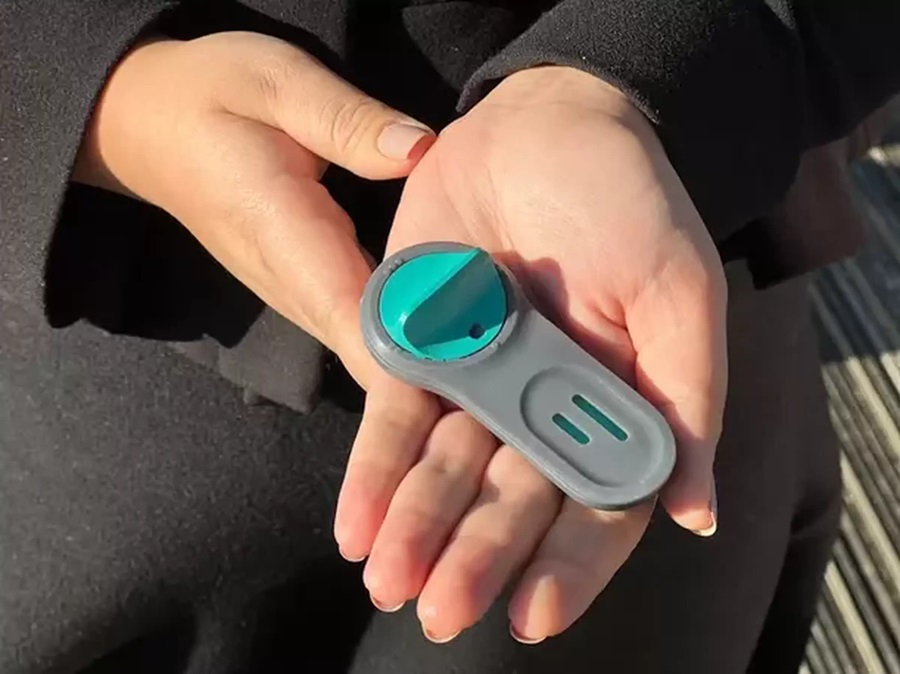
POC Finger-Prick Blood Test Determines Risk of Neutropenic Sepsis in Patients Undergoing Chemotherapy
Neutropenia, a decrease in neutrophils (a type of white blood cell crucial for fighting infections), is a frequent side effect of certain cancer treatments. This condition elevates the risk of infections,... Read more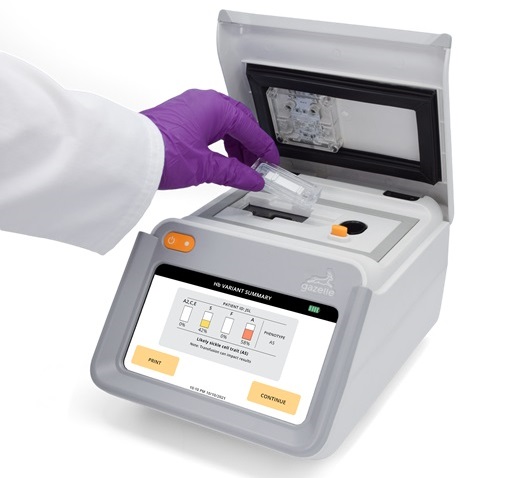
First Affordable and Rapid Test for Beta Thalassemia Demonstrates 99% Diagnostic Accuracy
Hemoglobin disorders rank as some of the most prevalent monogenic diseases globally. Among various hemoglobin disorders, beta thalassemia, a hereditary blood disorder, affects about 1.5% of the world's... Read moreImmunology
view channel
Diagnostic Blood Test for Cellular Rejection after Organ Transplant Could Replace Surgical Biopsies
Transplanted organs constantly face the risk of being rejected by the recipient's immune system which differentiates self from non-self using T cells and B cells. T cells are commonly associated with acute... Read more
AI Tool Precisely Matches Cancer Drugs to Patients Using Information from Each Tumor Cell
Current strategies for matching cancer patients with specific treatments often depend on bulk sequencing of tumor DNA and RNA, which provides an average profile from all cells within a tumor sample.... Read more
Genetic Testing Combined With Personalized Drug Screening On Tumor Samples to Revolutionize Cancer Treatment
Cancer treatment typically adheres to a standard of care—established, statistically validated regimens that are effective for the majority of patients. However, the disease’s inherent variability means... Read moreMicrobiology
view channelEnhanced Rapid Syndromic Molecular Diagnostic Solution Detects Broad Range of Infectious Diseases
GenMark Diagnostics (Carlsbad, CA, USA), a member of the Roche Group (Basel, Switzerland), has rebranded its ePlex® system as the cobas eplex system. This rebranding under the globally renowned cobas name... Read more
Clinical Decision Support Software a Game-Changer in Antimicrobial Resistance Battle
Antimicrobial resistance (AMR) is a serious global public health concern that claims millions of lives every year. It primarily results from the inappropriate and excessive use of antibiotics, which reduces... Read more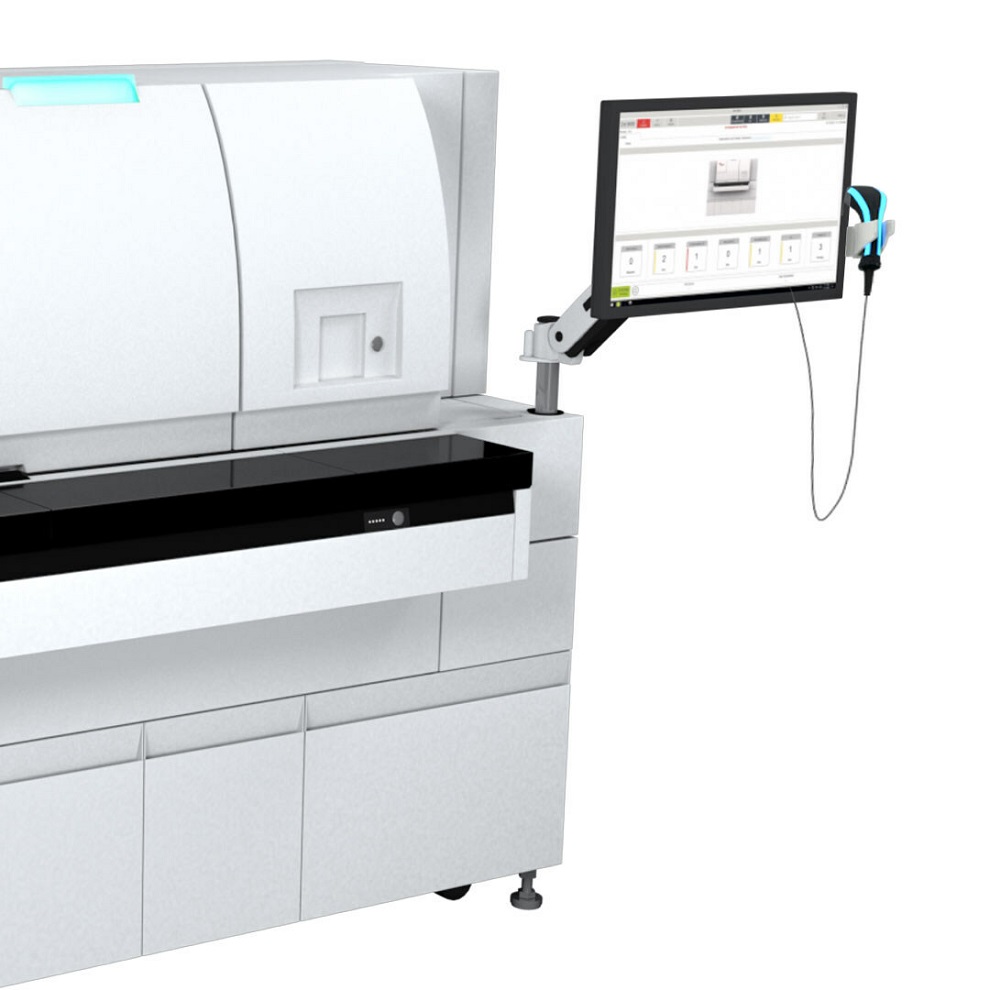
New CE-Marked Hepatitis Assays to Help Diagnose Infections Earlier
According to the World Health Organization (WHO), an estimated 354 million individuals globally are afflicted with chronic hepatitis B or C. These viruses are the leading causes of liver cirrhosis, liver... Read more
1 Hour, Direct-From-Blood Multiplex PCR Test Identifies 95% of Sepsis-Causing Pathogens
Sepsis contributes to one in every three hospital deaths in the US, and globally, septic shock carries a mortality rate of 30-40%. Diagnosing sepsis early is challenging due to its non-specific symptoms... Read morePathology
view channel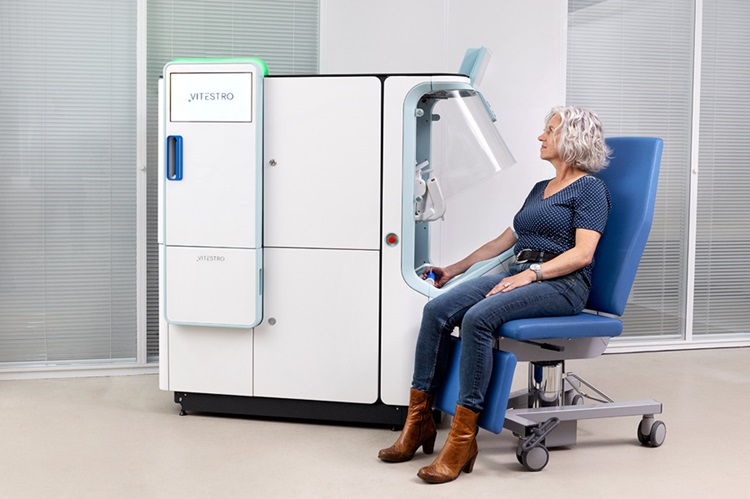
Robotic Blood Drawing Device to Revolutionize Sample Collection for Diagnostic Testing
Blood drawing is performed billions of times each year worldwide, playing a critical role in diagnostic procedures. Despite its importance, clinical laboratories are dealing with significant staff shortages,... Read more.jpg)
Use of DICOM Images for Pathology Diagnostics Marks Significant Step towards Standardization
Digital pathology is rapidly becoming a key aspect of modern healthcare, transforming the practice of pathology as laboratories worldwide adopt this advanced technology. Digital pathology systems allow... Read more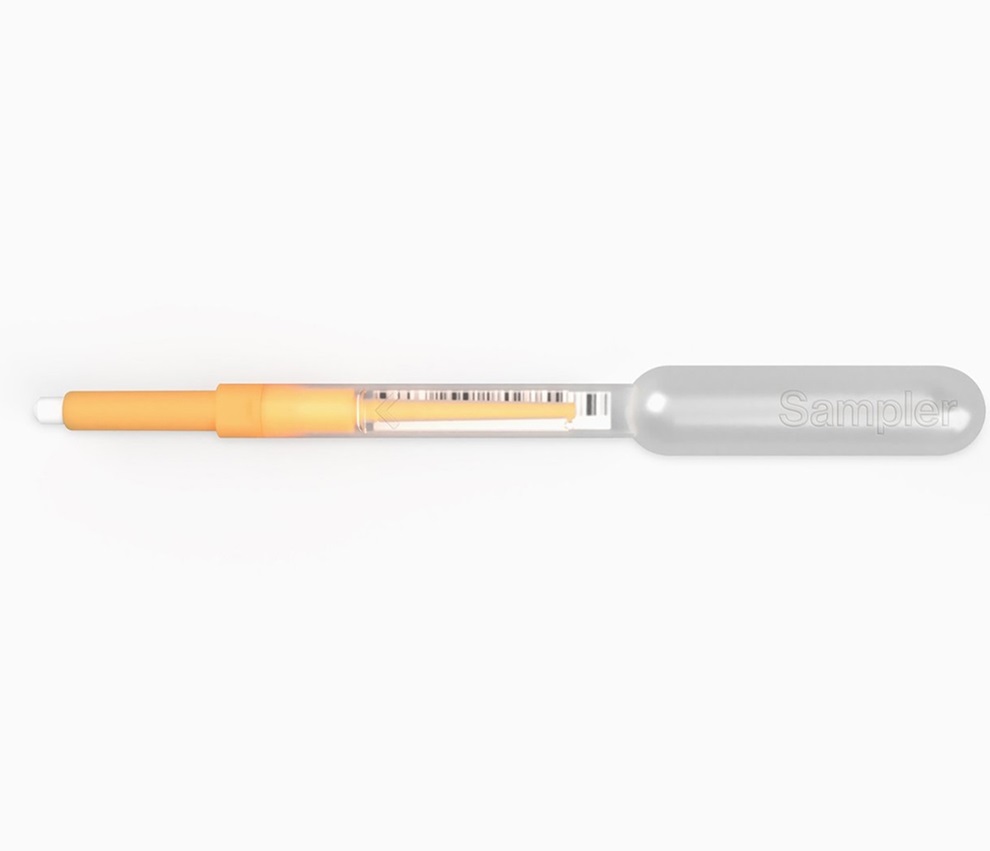
First of Its Kind Universal Tool to Revolutionize Sample Collection for Diagnostic Tests
The COVID pandemic has dramatically reshaped the perception of diagnostics. Post the pandemic, a groundbreaking device that combines sample collection and processing into a single, easy-to-use disposable... Read moreTechnology
view channel
New Diagnostic System Achieves PCR Testing Accuracy
While PCR tests are the gold standard of accuracy for virology testing, they come with limitations such as complexity, the need for skilled lab operators, and longer result times. They also require complex... Read more
DNA Biosensor Enables Early Diagnosis of Cervical Cancer
Molybdenum disulfide (MoS2), recognized for its potential to form two-dimensional nanosheets like graphene, is a material that's increasingly catching the eye of the scientific community.... Read more
Self-Heating Microfluidic Devices Can Detect Diseases in Tiny Blood or Fluid Samples
Microfluidics, which are miniature devices that control the flow of liquids and facilitate chemical reactions, play a key role in disease detection from small samples of blood or other fluids.... Read more
Breakthrough in Diagnostic Technology Could Make On-The-Spot Testing Widely Accessible
Home testing gained significant importance during the COVID-19 pandemic, yet the availability of rapid tests is limited, and most of them can only drive one liquid across the strip, leading to continued... Read moreIndustry
view channel_1.jpg)
Thermo Fisher and Bio-Techne Enter Into Strategic Distribution Agreement for Europe
Thermo Fisher Scientific (Waltham, MA USA) has entered into a strategic distribution agreement with Bio-Techne Corporation (Minneapolis, MN, USA), resulting in a significant collaboration between two industry... Read more
ECCMID Congress Name Changes to ESCMID Global
Over the last few years, the European Society of Clinical Microbiology and Infectious Diseases (ESCMID, Basel, Switzerland) has evolved remarkably. The society is now stronger and broader than ever before... Read more